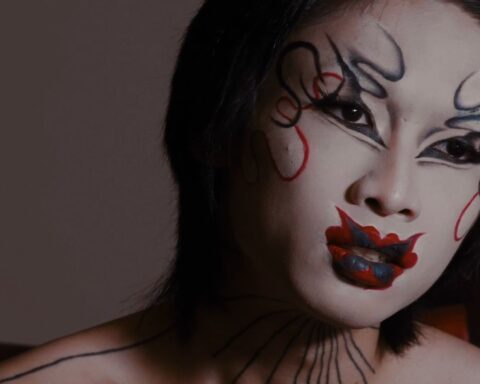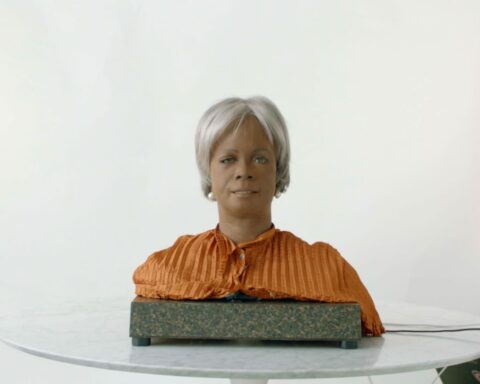Sing Me a Song
(France/Germany/Switzerland, 99 min.)
Programme: TIFF Docs (World Premiere)
Every edition of TIFF and Hot Docs seems to feature at least one documentary about child monks. This incredibly niche corner of documentary doesn’t run out of things to say. But Sing Me a Song leaves a viewer wondering how much longer these tales of a little wisdom will last—not because the subjects aren’t interesting but because they may soon become too rare. This exquisitely shot meditation on the future of faith offers a unique snapshot of our changing world.
Sing Me a Song is director Thomas Balmès’ follow-up to his wonderful 2014 film Happiness, which profiled a young Bhutanese monk named Peyangki as he entered life in the monastery. His commitment to a life of faith began at a time when the isolated nation was finally getting television and the old world was giving way to the new. Cut to ten years later and the monks have Wi-Fi. Peyangki is now a teenager, too, and absorbed in the wonders of the world that are a simple click away. Once he’s plugged in and logged on, the faith of a monk depends entirely on the strength of his connection.
Sing Me a Song rewards amply if one saw Happiness and can witness the passage of time on Peyangki and the monastic life more broadly. For audiences who haven’t seen the earlier film, Balmès sprinkles enough footage of the young man’s earlier years to let viewers appreciate the impact of technology on the budding monk. Grainer footage from yesteryear shows the boy eager, innocent, and inquisitive. The relative isolation of the monastery resembles a place frozen in time taking its last stand against the changing pace of the world around it. In the present, the walls have been breached and Peyangki is as curious and unruly as any teenager.
The monastic life adapts its pledge of asceticism to permit the boys iPhones and smart phones and tablets and video games. Balmès captures perfectly the temporal shift between Happiness and its successor with a hilarious long take of the monks in prayer. They sit in a circle, reciting prayers and bowing their heads with devotion. But as Balmès pulls the camera back to widen the shot, we gradually see what was previously below the frame: the boys’ phones. They’re all praying to Apple. They mumble their mantras with rote recitation while concentrating on the games, texts, sexy videos, and chats that radiate hypnotic white light from their screens.
While technology distracts the monks from their practice, the bright buzzing doodads provide windows to the world the boys didn’t have before. Apps for chats and dating introduce the monks to girls and violent video games, neither of which really jive with the traditional vows of the monks. Balmès captures droll scenes of the monks playing war, just as many young kids will do elsewhere in the world, as they hurl firecrackers at one another and charge with the rat-a-tat-tat of make-believe gunfire. First-player shooter games are their weapon of choice when they visit the arcade, and Balmès connects the boys’ fixation on violence with the foreign images that demand their attention via their screens. The old and the new collide as these vessels for peace indulgence in warfare and violence.
Girls also figure prominently into the story when they were mostly absent from Happiness aside from Peyangki’s mother. The young monk encounters the all-to-familiar gap between expectations and reality when his dating app match turns out to be nothing like her profile pic. He also falls head over heels in love with a young woman who vlogs about shopping and posts videos of herself lip-syncing pop songs. Out in the city, awash in the intoxication neon lights of the club compared to the serene candlelight of the monastery, the pace and energy of contemporary life tempts Peyangki to reconsider his faith.
Balmès delivers a rich character study that asks how traditional ways can live alongside contemporary conveniences. Part two of his longitudinal study considers the roles of faith and sacrifice in an ever-changing world as Peyangki wrestles with following either of two paths that move at vastly different paces. The film taps into the karmic gaps between the world of chants, meditation, and patience compared to the world of house beats, constant distractions, and instant gratification. Straddling the two worlds can cause doubt in a young mind, but Balmès’ striking portrait suggests that such doubts have the power to provide strength. Perhaps by the next film, the monk won’t be so little.











